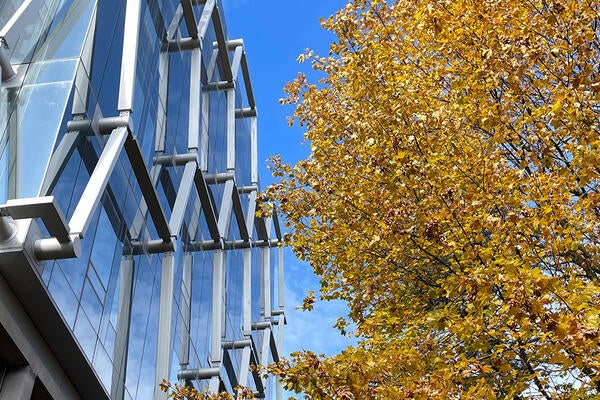
Cancerous breast tissue glows in new AI-enhanced MRI images
Technology developed by Waterloo researchers not only improves breast cancer detection but also can help treat it more effectively

Technology developed by Waterloo researchers not only improves breast cancer detection but also can help treat it more effectively
By Media RelationsImaging technology developed and refined at the University of Waterloo promises better detection and treatment of breast cancer by more accurately pinpointing cancerous tissue.
First successfully applied to prostate cancer, the new form of magnetic resonance imaging (MRI) has now been optimized using artificial intelligence (AI) to make cancerous tissue appear to light up or glow next to healthy breast tissue in images.
“This technology has great potential to not only improve breast cancer detection, but also treatment,” said Dr. Alexander Wong, a professor in the Department of Systems Design Engineering at the University of Waterloo and co-director of the Vision and Image Processing (VIP) Lab.
“Our images contain key predictive information to help clinicians determine the best courses of action for treating each patient.”

Several MRI images developed by the Waterloo research team show how cancerous tissue can "glow" in light green imaging, helping doctors better detect cancer in breast cancer. (University of Waterloo)
The system works by leveraging specific physical characteristics of breast tissue such as density, and how the irregular packing of cells leads to differences in the way water molecules move in cancerous tissue compared to healthy tissue.
Known as synthetic correlated diffusion imaging (CDI), the new technology highlights those differences by capturing, synthesizing and mixing MRI signals at different gradient pulse strengths and timings.
The result is significantly better delineation of cancerous breast tissue, making it a potentially powerful tool for doctors and radiologists.
“The more accurate we make CDI for delineating between cancerous tissue and healthy tissue, the more effective patient treatment plans and treatment itself can be,” said Amy Tai, a Waterloo engineering PhD student who is supervised by Wong at the VIP Lab.
By giving surgeons more precise information on the margins of tumours, CDI images could help them carefully limit the amount of tissue removed, or ensure all cancerous tissue is removed the first time so a second operation isn’t required.
Tailoring the underlying system for breast cancer involved the use of pre-treatment images of more than 350 patients at 10 medical institutions in a study by the American College of Radiology Imaging Network.
Researchers now hope to expand the use of their imaging technology to other kinds of cancer, especially cancers of the neck and head, such as brain cancer.
“We have already illustrated great potential for prostate cancer and now we are seeing promising results for breast cancer,” said Wong. “It’s extremely encouraging that we’ll be able to expand and help in other areas as well.”
The study, Optimized Synthetic Correlated Diffusion Imaging for Improving Breast Cancer Tumor Delineation, appeared in Sensors.

Read more
15 University of Waterloo researchers have been named to the annual Highly Cited Researchers™ list for significant contributions to their specific fields of research

Read more
New Canada Research Chairs will tackle future-focused problems from social robots and intergroup attitudes to geochemistry and nanoscale devices

Matthew Scarfo (left), a Waterloo PhD student, and Dr. Hamed Shahsavan, professor of chemical engineering, both worked on the research that developed the flexible "artificial muscles" material that could replace rigid components in robots. (University of Waterloo)
Read more
Waterloo-led researchers advance technology to make soft robots stronger with an additive that stiffens rubber-like materials
The University of Waterloo acknowledges that much of our work takes place on the traditional territory of the Neutral, Anishinaabeg, and Haudenosaunee peoples. Our main campus is situated on the Haldimand Tract, the land granted to the Six Nations that includes six miles on each side of the Grand River. Our active work toward reconciliation takes place across our campuses through research, learning, teaching, and community building, and is co-ordinated within the Office of Indigenous Relations.